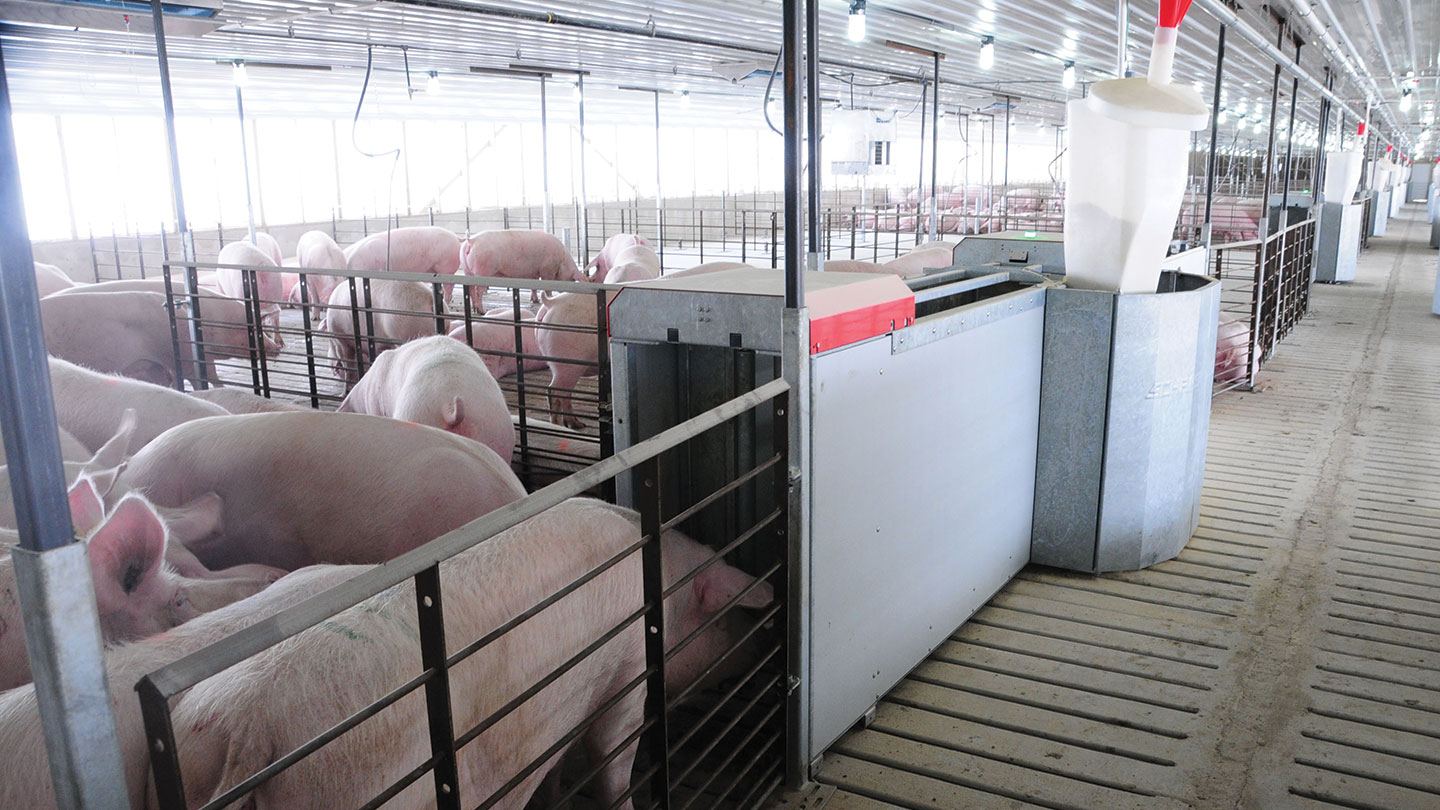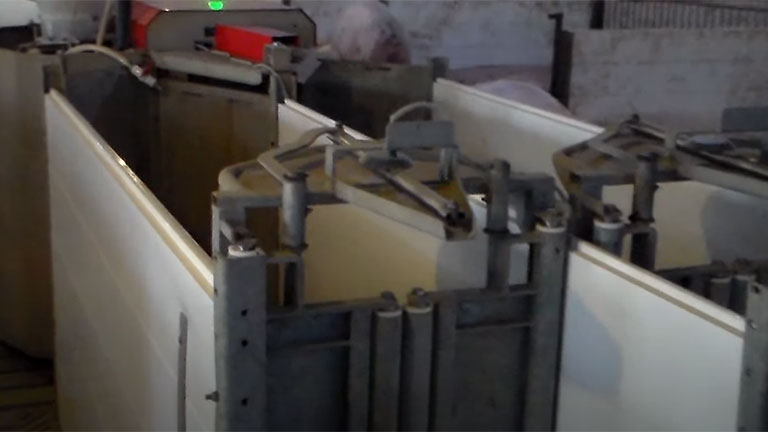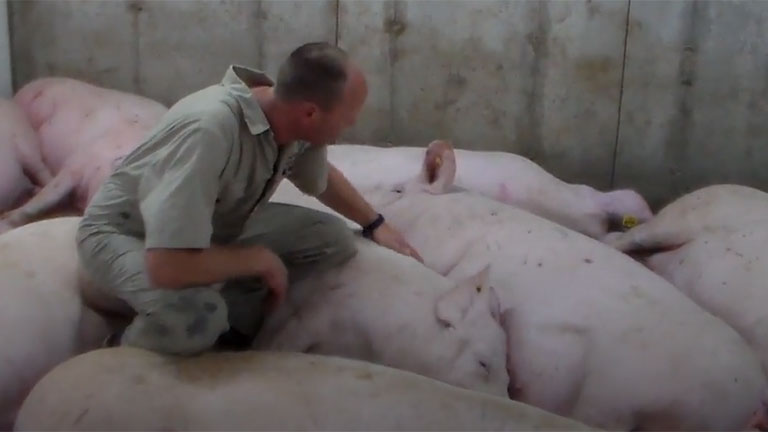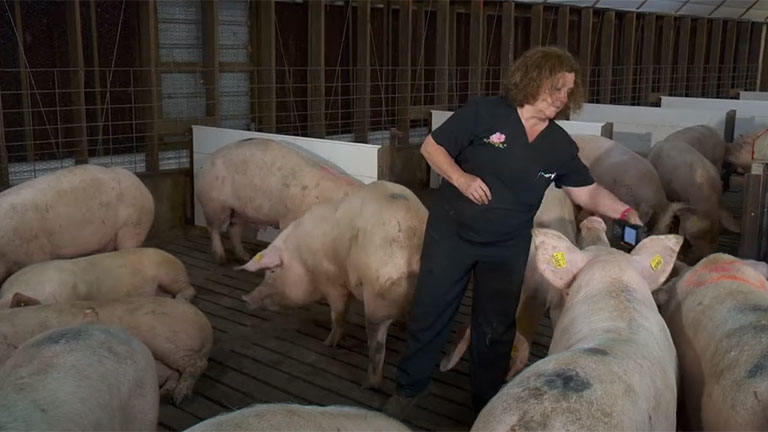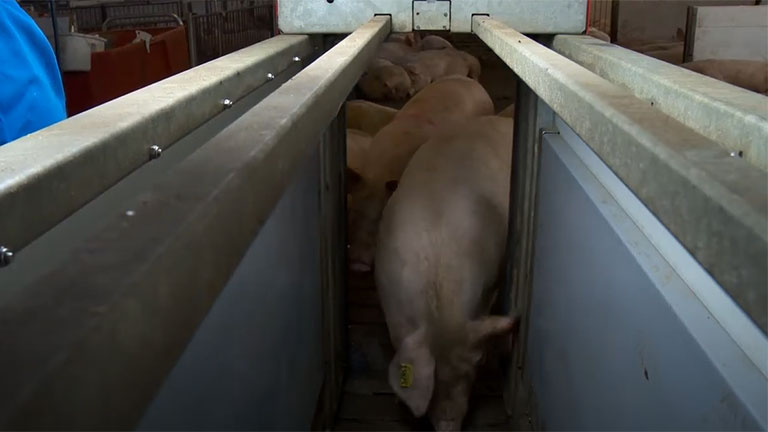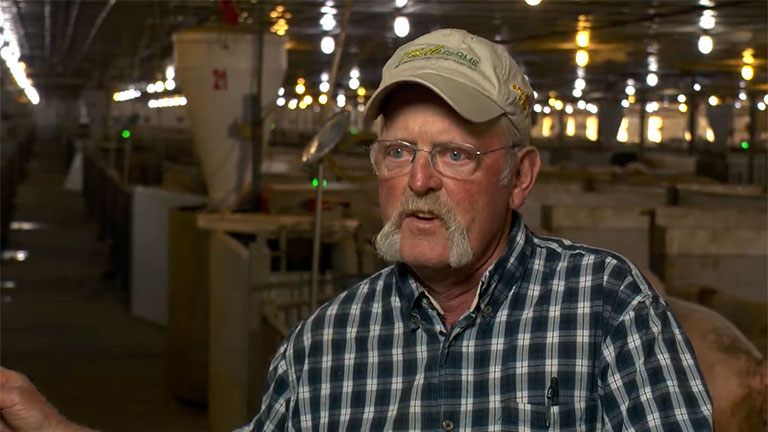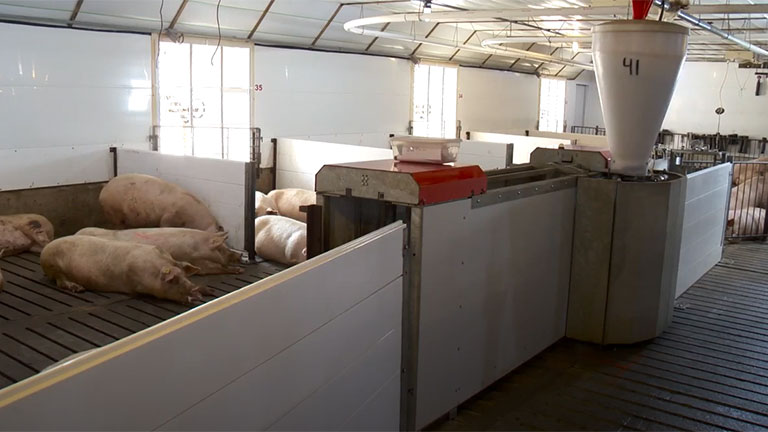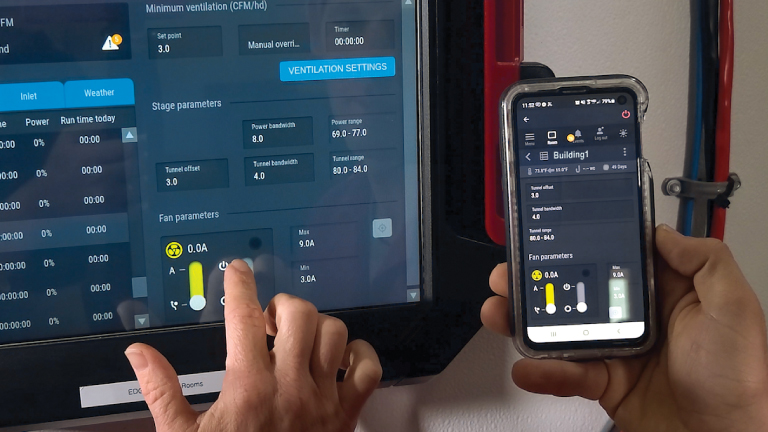
Remote Management
Precise monitoring requires controls that are able to conform to the specific needs of your production facility. AP control systems adapt to your climate and feeding requirements. They feature intuitive, user-friendly operation and construction built to withstand the rigors of the environment.
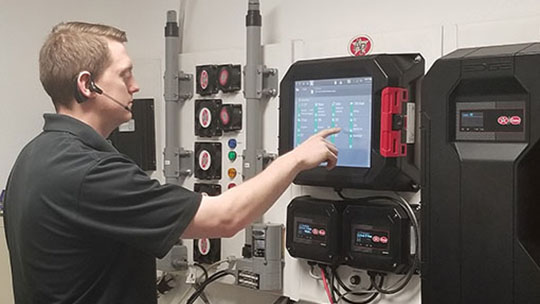
Sales and Service
Check this area often for updated manuals, software updates and warranty details.
Resources
Learn more about AP products and specifications in our brochure library.
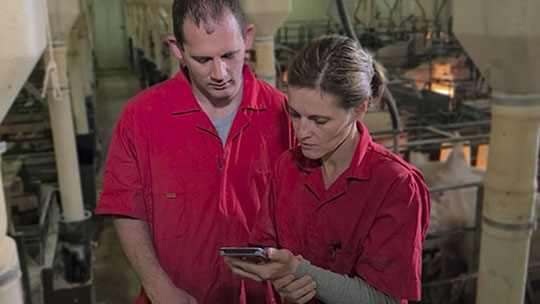
About Us
As the global population grows, the need for more efficient swine production solutions becomes increasingly important. With over 30 years of industry experience, AP (Automated Production Systems) is positioned to support this ever growing demand across the globe. AP is committed to delivering comprehensive solutions by providing you with equipment that works as hard as you do.
Electronic Sow Feeding
BARN DESIGN AND ANIMAL FLOW
Electronic Sow Feeding
BARN DESIGN AND ANIMAL FLOW
Highlights
- The AP/Schauer Team has experience with a variety of pen housing options from total-slatted confinement barns, to partially-slatted sow barns, to deep bedded barns.
- Our expert team will provide concept designs for your ESF initiatives that include recommendations to help minimize the untoward effects of social hierarchy in group housing.
- We will help identify the best combination of animal flow and grouping strategies that promise maximum productivity.
- Over 100,000 sows are being fed by Compident ESF stations in AP Schauer-designed pen gestation barns across the U.S.
ESF Videos
Tennessee Producer Shares thoughts on Electronic Sow Feeding
More Videos
Built to Perform
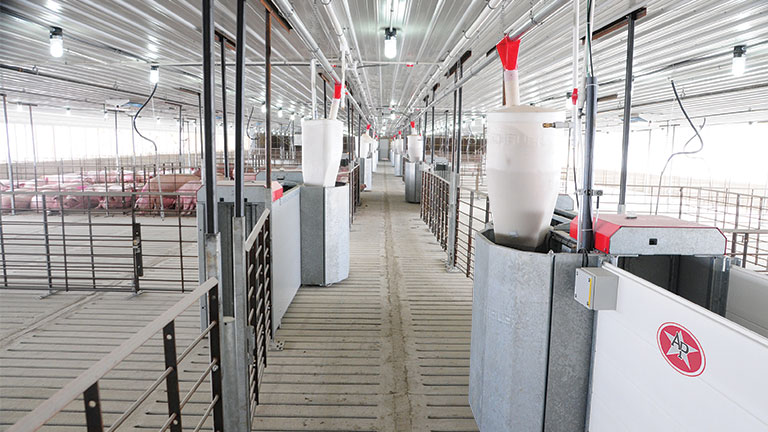
ESF Walkway Layout
Positioning Compident ESF stations on walkways simplifies sow introduction and registration, and provides access to the units for service.
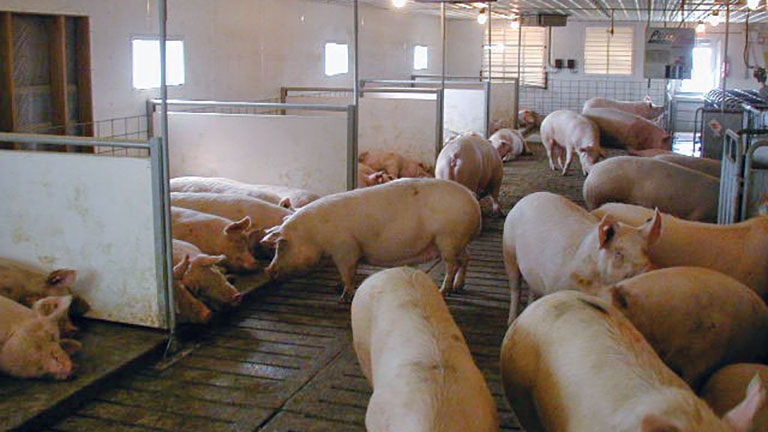
Laying Areas
Laying areas, divided by partitions, provide sow comfort and protection and decrease aggression while promoting a stable group hierarchy.
Layout Options
Typical Post-Implantation Layout with Static Groups
Group is constituted once, social hierarchy stabilizes, and the group is left intact for the duration of gestation. The goal is to have one weeks breeding (or a fraction of that weeks breeding) in a larger sow unit to be used to constitute a static group. The advantage of this approach is that the breeding group stays physically intact much as it would in a crated facility. However, static groups can create challenges in space utilization, resulting in increased facility cost or decreased sow inventory. Static groups are an “all in / all out” system that requires additional barn spaces in reserve to allow for animal movement. In reality, very few gestation groups are truly static as some sows will drop out due to pregnancy loss, injury or death. This leads to suboptimal utilization of pen space by the end of the gestation period because sows removed from the group cannot be replaced. Alternatively, one can attempt to anticipate this fall-out by overstocking the pen initially which can result in a less than ideal per sow space allotment.
Typical Pre-Implantation Layout with Large Dynamic Groups
Group constituency is constantly changing. Dynamic groups are essentially a “continuous flow” system which allows space utilization to be optimized in each pen. Weekly breeding groups are subdivided with animals being introduced into a number of different pens optimizing the space utilization in each pen. This approach works well with large group sizes and can also be used to optimize feed station utilization in sow units with smaller breeding groups. Social disruption and associated fighting is minimal in large groups and any repeat breeders can simply be re-bred and left in the same pen. It is not necessary to maintain the integrity of the breeding group because the computer system will track the location and monitor the status of animals regardless of their location. The feeding station can be used to sort or mark the sows for scheduled management activities as a group regardless of in which pen the sows are located. The flexibility in animal movement and the ability to achieve optimum space utilization in all pens makes dynamic groups an attractive solution for many herds.
